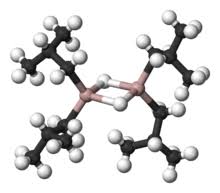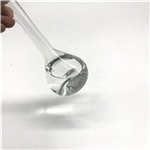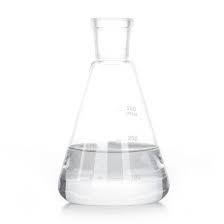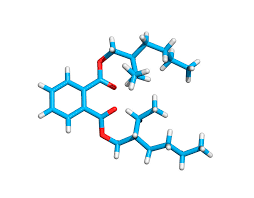Reaction of diisobutylaluminium hydride with selenium and tellurium
Nov 7,2019
Introduction
Selenoamides have proved to be useful compounds in organic transformations and several methods for their preparation have been reported.1 There has been a considerable interest in their tellurium analogs, viz., telluroamides, with respect to their syntheses, structures and reactivities. Telluroamides, like other tellurocarbonyl compounds, are difficult to prepare due to the instability of the C]]Te bond. To date, only a very limited number of telluroamides 2 and their first metal complexes 3 have been described. Among currently active studies in the field of organo-selenium and -tellurium chemistry,4 bis(dimethylaluminium) selenide and telluride, (Me2Al)2E where E is Se or Te, have been found to be effective reagents for the conversion of carbonyl groups to seleno- and tellurocarbonyls (C]]E).2b,c,5 Using this procedure, we have successfully synthesized two telluroamides and determined their crystal structures.2c In this paper,6 we report a one-pot synthesis of seleno- and telluro-amides by the reaction of amides with some new Al]Se and Al]Te reagents (Scheme 1). These reagents are prepared by the reaction between diisobutylaluminium hydride and selenium or tellurium powders. They are obtained as a mixture of (Bui 2AlE)2 and (Bui AlE)n where E is Se or Te.

Results and discussion
Under an argon atmosphere, a mixture of Bui 2AlH (1.5) solution in toluene, 10 ml, 15 mmol) and one equivalent of powdered selenium or tellurium was heated at 120–130 8C for 1–2 h. All of the Se or Te was dissolved. There was first produced a clear colorless solution7 in the case of Se, which subsequently converted to a white suspension when cooled below 90 8C. A white suspension7 was obtained when Te was used. During the heating, gaseous evolution was observed.8 Mass spectrometry confirmed that the gases were hydrogen and isobutane which indicated the formation of dimer (Bui 2AlE)2 and oligomer (Bui AlE)n.
The products obtained in the reaction between Se and Bui 2AlH were characterized by NMR spectrometry. In the 1 H spectra, compared with Bui 2AlH, the reaction mixture exhibited resonances at the same region except for the presence of a small doublet at δ 2.65 ppm arising from the CH2 bonded to Se. This indicates that only a small amount of selenium inserts into the C]Al bond of Bui 2AlH to form C]Se]Al type compounds. Most of the selenium inserts between aluminium and the hydride hydrogen. Seven doublets for methyl and methylene protons of Bui groups appeared in the 1 H NMR spectra, and eight different carbon resonances were observed in the 13C NMR spectra (Fig. 1). The relatively complicated

1 H and 13C NMR spectra are due to the presence of a mixture of several Al]Se compounds formed in the reaction. In the 77Se NMR spectra (in C6D6–toluene), two peaks (δ 2184.53, 2263.37 ppm) were observed. They arise from two different Al]Se compounds, (Bui AlSe)n and (Bui 2AlSe)2. These shifted to δ 2211.64 and 2430.27 ppm when THF was added.9

These results suggest that the reaction between diisobutylaluminium hydride and selenium and tellurium produces a mixture of (Bui 2AlE)2 and (Bui AlE)n (E is Se or Te) together with a small amount of C]E]Al type compounds Owing to their instability, toxicity, and extremely unpleasant odor, these reagents were neither purified nor fully characterized. We have begun to investigate their reactivities. As listed in Table 1, these reagents prepared in situ undergo reaction with amides and efficiently convert them to seleno- and telluroamides 1–15. In addition, Bui 2E2, which was identified by 1 H NMR and mass spectrometry, was isolated in all cases in 5–10% yields.7 Compounds 2, 4, 6, 7, 12 and 14 are the same as those obtained with the use of (Me2Al)2E.2b,c,3 All selenoamides gave the expected NMR (1 H, 13C, 77Se), mass spectral and analytical data. Tellurium compounds (11–15) gave the expected spectral data, but because of decomposition during delivery they did not give acceptable elemental analyses. Seleno- and telluroformamides (1–7 and 11–14) were isolated in yields of 49–69%. However, N,N-dimethyl(selenoacetamide) 8 and a γ-selenolactam, 1-methyl-2-selenoxopyrroline 10 were obtained in lower yields. N,N-dimethyl(selenobenzamide) 9 was isolated in only 30% yield, even under much more vigorous reaction conditions. All attempts to prepare N,N-dimethyl(telluroacetamide) and N,N-dimethyl(tellurobenzamide) were unsuccessful. This is probably because the CH3 of N-acetyl or the Ph of N-benzoyl hindered the attack from Al]Se or Al]Te reagents into the carbonyl group.
Both the reagents described in this paper, (Bui 2AlE)2 and (Bui AlE)n where E is Se or Te, and the closely related analog (Me2Al)2E are good for the conversion of amides to selenoamides and telluroformamides. The former are much easier to prepare. The yields of selenoamides and telluroformamides obtained in the present work are generally lower than that prepared by the procedure using (Me2Al)2E.2b,c However, 4- (telluroformyl)morpholine (12) was obtained almost in the same yield: 66% in this work and 69.5% when (Me2Al)2Te was used. In addition, (Me2Al)2E compounds are useful for the preparation of selenoaldehydes, selenoketones, telluroaldehydes and telluroketones.5 Further investigations on the utilization of the reagents (Bui 2AlE)2 and (Bui AlE)n are in progress.
In conclusion, the present procedure provides a convenient synthetic route for the preparation of a variety of selenoamides and telluroformamides, and can easily be adapted to large scale syntheses with proper safety precautions in handling large amounts of diisobutylaluminium hydride toluene solutions.
Experimental
THF was refluxed over potassium metal and distilled under argon prior to use. All other chemicals were used as received. 1 H and 13C NMR spectra were recorded on a Varian XL-200 spectrometer (200.1 MHz for 1 H, 50.3 MHz for 13C). 77Se and 125Te NMR spectra were measured on a Varian XL-200 broadband spectrometer (38.2 MHz for 77Se, 63.1 MHz for 125Te) with Ph2Se2 (δ 460 ppm referenced to Me2Se) 10a or Ph2Te2 (δ 420.8 referenced to Me2Te) 10b as the external standards. Mass spectra were run using a VG-70S spectrometer in the 1FAB/DP or EI/DP mode. Melting points were determined on a Fisher-Johns melting point apparatus and are uncorrected. Elemental analyses were performed by Galbraith Laboratories,
General procedure for one-pot synthesis of selenoamides A mixture of selenium (1.185 g, 15 mmol) and Bui 2AlH (1.5 in toluene, 10 ml, 15 mmol) was heated at 120–130 8C for 1 h under argon, and then cooled to room temperature. To this, 15.5 mmol of the appropriate amide was added. The mixture was stirred under the conditions shown in Table 1. Following evaporation, the residue was chromatographed on Silica gel column with hexane followed by CH2Cl2 as the solvents.11 Evaporation of the eluate gave the corresponding selenoamides.
Acknowledgements
This work was supported by grants from the Robert A. Welch Foundation (Houston, TX, USA) and the Selenium-Tellurium Development Association. We thank Asarco (USA) and Noranda, Inc. (Canada) for the gifts of selenium and tellurium powders. The reviewer’s helpful comments are highly appreciated.
- Related articles
- Related Qustion
Mesitylene is a colourless liquid with sweet aromatic odor. It is a component of coal tar, which is its traditional source. It is a precursor to diverse fine chemicals. The mesityl group (Mes) is a substituent with the formula C6H2Me3 and....
Nov 7,2019Organic ChemistryDi-2-ethylhexyl phthalate (DEHP) is the most common member of the class of phthalates, which are used as plasticizers in polymer products to make plastic flexible.....
Nov 7,2019Chemical ReagentsDiisobutylaluminium hydride
1191-15-7You may like
Diisobutylaluminium hydride manufacturers
- Diisobutylaluminium hydride
-

- 2025-11-05
- CAS:1191-15-7
- Min. Order:
- Purity: 0.99
- Supply Ability:
- Diisobutylaluminium hydride
-

- $10.00 / 1KG
- 2025-10-21
- CAS:1191-15-7
- Min. Order: 1KG
- Purity: 99%
- Supply Ability: 5tons
- Diisobutylaluminium hydride
-

- $30.00 / 10g
- 2025-04-09
- CAS:1191-15-7
- Min. Order: 1g
- Purity: 99%
- Supply Ability: 1000kg/month






